As an urban dweller, I know firsthand what it’s like to live in a small apartment.
Unlike rural dwellers, I don’t have the luxury of putting up a showy, glamorous Monstera or a towering Fiddle leaf fig.
Instead, I have to settle for houseplants that are petite, preferably, ones that can fit on a windowsill.
If you’re sailing in the same boat, the Peperomia polybotrya is the perfect indoor plant.
It’s low-maintenance, beautiful, and most importantly, compact.
In this article, I’ll provide an in-depth guide on how to care for Peperomia polybotrya.
Peperomia polybotrya Care
To care for Peperomia polybotrya use a well-draining potting mix using equal parts of peat moss and perlite and bright indirect sunlight. Water thoroughly once the top 2” (5cm) of soil are dry and provide a temperature between 65-80°F (18-27°C). A humidity of 40% or lower is perfect. Fertilize by-weekly in spring and summer using a balanced liquid fertilizer with NPK 20-20-20 or 10-10-10.
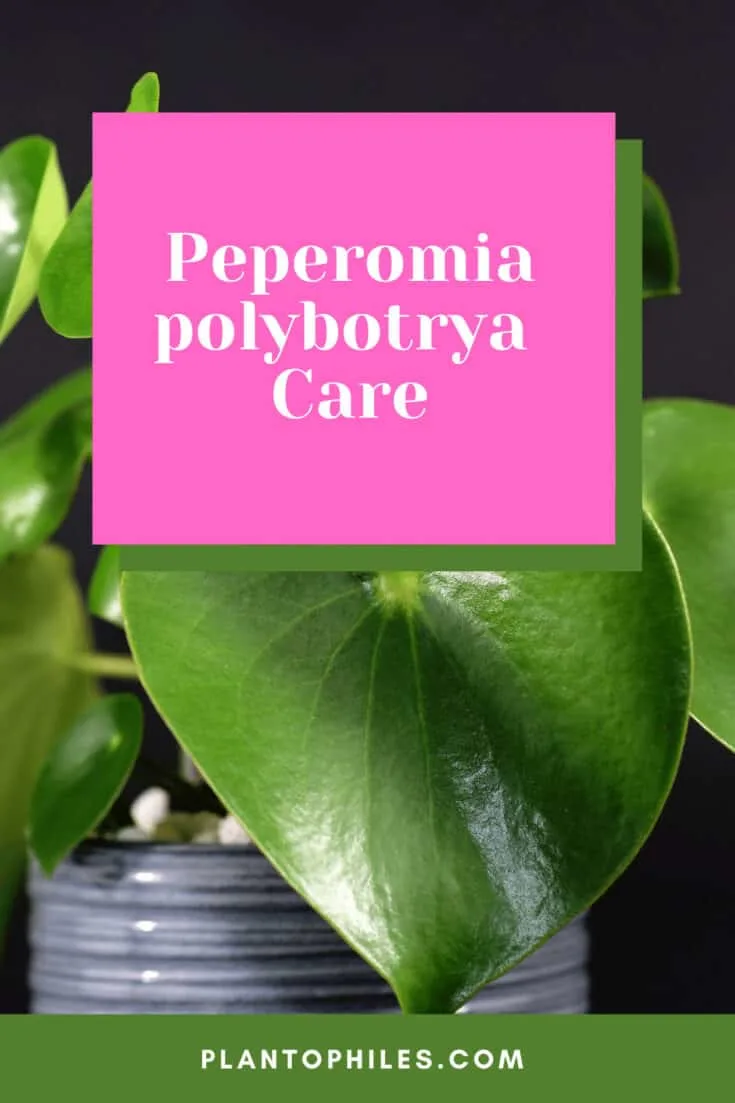
Peperomia polybotrya Care
Table of Contents
Peperomia polybotrya Care Guide
Soil
For Peperomia polybotrya use a potting mix consisting of equal parts of peat moss and perlite.
One drawback of the Peperomia polybotrya is that it has a weak root system.
This means it can’t be transplanted as easily as other houseplants.
To provide optimal support and ensure the plant grows healthily, use a quality potting mix.
I always use a blend containing equal parts of peat moss and perlite.
Since it’s easy to overwater the polybotrya, it’s also important to ensure that the soil used has good drainage.
Light
The Peperomia polybotrya thrives best when it’s exposed to either bright indirect sunlight or artificial bright light.
When it comes to indirect sunlight, be sure to place it on an east or west-facing windowsill.
That said, a little morning sunshine won’t harm this plant. It helps its foliage develop healthily.
However, if there’s too much sunlight, consider placing it behind curtain sheers. This way, the leaves won’t get scorched and wilt.
Important to keep in mind is that insufficient light can cause the plant to become leggy.
Essentially, it starts growing in the direction of the light source. This isn’t a big deal though as you can always prune the stretched-out plant.
But afterward, ensure you move it to a place with adequate light.
Watering
Water Peperomia polybotrya thoroughly once the top 2” of soil are dry by checking with your index finger.
As a succulent plant, this Peperomia has an incredible ability to retain water in its foliage.
So if you have a tendency of forgetting to water your houseplants as I do, this plant is very forgiving.
With the Raindrop Peperomia, the trick is to water generously.
No, when I say generously, I do not mean overwatering. What I mean is adding just enough water to last it for a while.
Overwatering Peperomia polybotrya does more harm than good.
Here’s the thing, if you add too much water, it will occupy plenty of space in the soil.
This reduces the amount of oxygen, which in turn affects the development of the root system.
So, what’s the right frequency of watering this plant? Experts recommend doing it twice a week during summer and once a week during winter.
However, I recommend watering your plant based on the dryness of the soil, as opposed to estimating the time when you last watered.
I always stick my finger in the soil to determine whether it’s truly dry before watering.
Temperature
The ideal temperature range for Peperomia polybotrya is 65 and 80°F (18-27°C).
The Peperomia polybotrya fares well under warmer temperatures.
The minimum temperature this plant should be subjected to is 50°F (10°C).
This is not that different from other Peperomias, which thrive in temperatures ranging between 65 and 80°F (18-27°C).
During winter, I counter-check the placement of my raindrop plant to ensure it’s not being exposed to extremely cold temperatures.
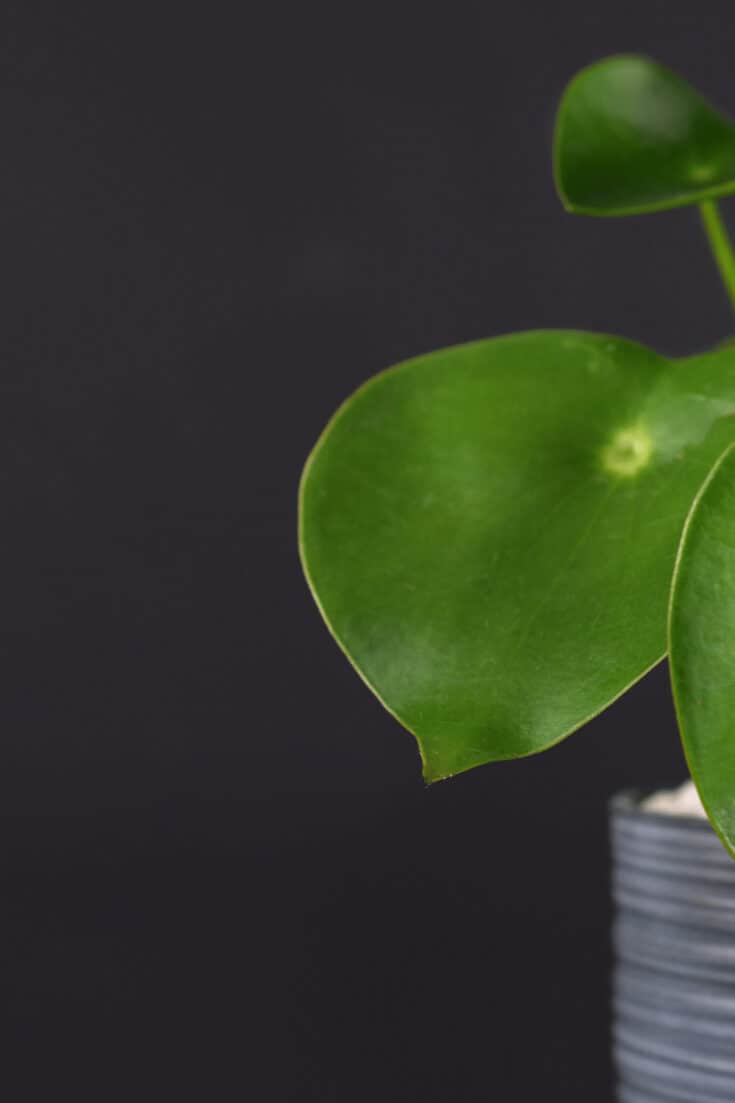
Peperomia polybotrya grows best at temperatures between 65-80°F (18-27°C)
Humidity
A humidity of 40% or even less is sufficient for Peperomia polybotrya.
The heart-shaped leaves of the Peperomia polybotrya are fleshy and pretty succulent.
This is mainly because they retain moisture, which helps them survive through the dryer periods.
Given the succulence of these leaves, the plant doesn’t need a very humid environment to grow well.
In any case, excess moisture will only promote pests and diseases.
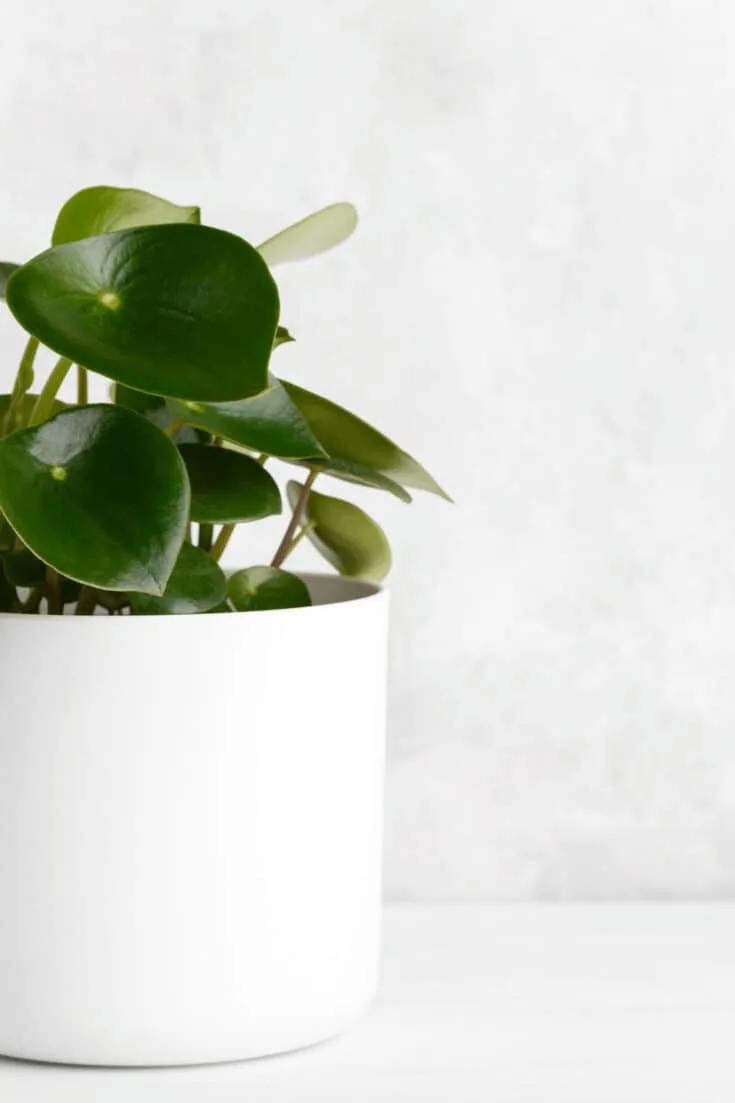
Peperomia puteolata is a succulent plant that is fine with low humidity levels around 40% or lower
Fertilizer
Fertilize Peperomia polybotrya every two weeks in spring and summer using a balanced fertilizer with an NPK of 20-20-20 or 10-10-10.
For optimal growth, consider applying fertilizer to your Peperomia polybotrya.
I prefer fertilizing in spring and summer as this is when the plant’s growth is at its peak.
When it comes to type, a NPK 20-20-20 fertilizer is the best option.
It contains equal parts nitrogen (N), phosphorus (P), and potassium (K).
Also, only apply the fertilizer directly to the soil – to facilitate root development – and not the leaves.
Propagation
If you love Peperomias, you’ll be pleased to know that the polybotrya is one of the easiest plants to propagate.
Its thick and succulent leaves store water and nutrients, providing a steady supply of food.
Here’s how I propagate my Peperomia polybotrya:
I start by filling a small container with moist soil. I prefer moist soil so that it’s ready to facilitate the growth of the cuttings
Next, I use my gardening shears to get a stem cutting with three or more leaves. When clipping, I usually cut below the bottom leaf. I then remove the lower leaves so that I’m only left with two at the top.
Now all that’s left to do is to pot my fresh cutting. This entails putting the cutting upright in the moist soil from step 1.
I suggest potting your cutting while it’s still fresh to encourage proper growth.
While propagating is that simple, there are a couple of points you should keep in mind. One is the location of your plant.
Pick a spot that is moderately humid. Alternatively, you can improvise by placing a large plastic bag over the pot and punching holes in it.
You can use chopsticks to support the bag so that it doesn’t cover the plant.
Also, the ideal spot should have room temperature and be away from direct sunlight.
The cuttings of a polybotrya scorch easily if exposed to too much sunlight.
Water Propagation
The Peperomia polybotrya is a highly adaptable plant; thus, it can also be propagated in water.
As is the case when propagating in soil, leave a few leaves on the stem cutting.
Also, ensure that at least one or two nodes are submerged underwater. A node is a point where leaves attach to the stem.
Similarly, change the water as frequently as you can; at least once every week. This step helps to keep the water fresh; hence prevent rotting.
Growth
The Peperomia polybotrya is not a fast-growing plant. It takes up to four weeks to see the first indication of roots. The leaves take even longer than that.
Also, a polybotrya grows into a fairly compact shape, which is what makes it a suitable indoor plant. The largest it gets is between 10 and 12 inches in height.
Potting
Like most Peperomias, the polybotrya has a long lifespan. Once it’s established a strong root system, it can thrive in a small pot for years.
It means that there’s very little need to repot the plant.
The only time I’m forced to transplant my polybotrya is if some of its roots start popping out through the drainage holes.
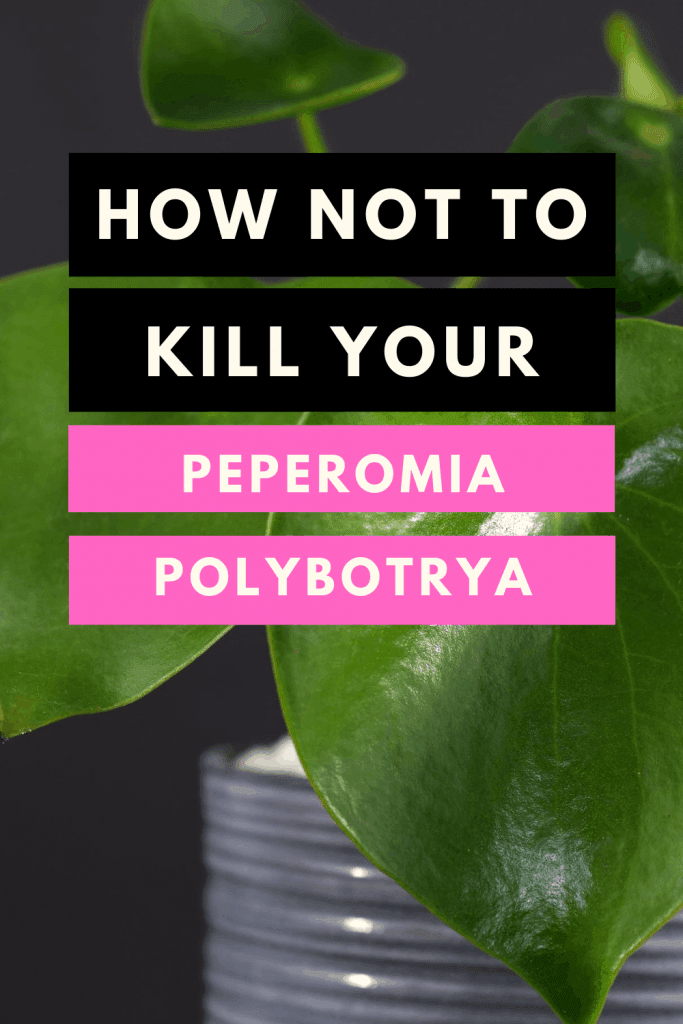
Peperomia polybotrya Care
Common Problems with Peperomia polybotrya
Good news, Peperomia polybotrya is a hardy plant.
Essentially, it can withstand adverse growing conditions, including pests and diseases.
The only time this plant becomes susceptible to pests is if it’s not well taken care of. Two troublesome pests that are likely to attack this houseplant are:
The red spider mites are all red so they’re pretty easy to spot. When they attack, they suck sap from the foliage of your Peperomia.
This causes leaf loss, and in severe cases, the plant’s death.
To know whether your Peperomia polybotrya has been invaded by red spider mites, look for pale mottling on the leaf’s upper surface. You may also notice a fine silk webbing on the plant.
Mealybugs, especially the Citrus mealybug species, is another pest that’s likely to attack your Peperomia plant.
Luckily, it’s also easy to identify as it has a pink-colored and soft body. Plus, it has a waxy texture.
Like the red spider mite, this insect damages plants by extracting sap. The most vulnerable parts are the stem’s tips and leaf junctures.
Both of these pests can be controlled using garden sprays, either non-organic or organic.
Usually, I prefer to make homemade pesticides using natural products like neem oil.
To prepare this, I first look for a premium-quality neem oil or neem leaf extract. I then mix it with an emulsifying solution like liquid soap; and water.
Once the pesticide solution is ready, all I have to do is to put it in a spray bottle and apply directly on the pests.
If you opt for this route, be sure to use your homemade pesticide as soon as possible.
This is because some ingredients tend to break down after some time; hence, lose their effectiveness.
Peperomia polybotrya Plant Profile
Overview
Peperomia polybotrya is actually the scientific name of an evergreen plant hailing from Africa and the tropical regions of South America.
It’s particularly common in Colombia and Peru according to North Carolina State University.
The plant’s name has roots in the Greek language. ‘Peperomia’ means ‘resembling pepper’ while ‘polybotrya’ means ‘many’.
Its more popular names are Coin-Leaf Plant and Raindrop Peperomia. These arise from the teardrop/ heart shape of the plant’s leaves.
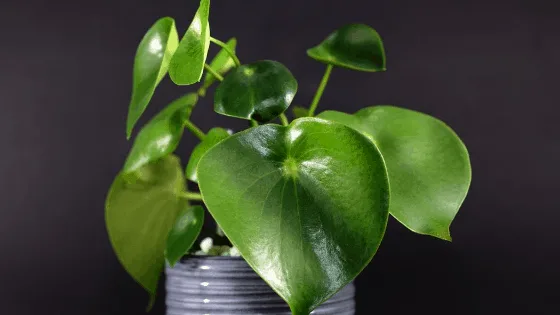
Peperomia polybotrya Care
Foliage and Stem
The leaves of the Peperomia polybotrya are thick and succulent.
Given their shape, they are a distinct feature of this plant, which is sometimes mistaken for the Pilea peperomioides.
These leaves also have a dark-green hue, and are supported on very tout stems.
Flowers
The Peperomia polybotrya is also known for its green-tipped flowers.
These flowers tend to grow in clusters and have a really sweet fragrance. Sadly, the flowers only last for a short while.
Tips to Keep Peperomia polybotrya Problem-Free
Keep your polybotrya away from direct sunlight
Maintain the right temperature and humidity levels to prevent the leaves from wilting
Water the plant generously but be sure not to go overboard. This Peperomia tolerates dry soil better than it does a waterlogged one
Also, water your polybotrya only when the soil is dry to touch
During winter, mist the plant lightly to keep it hydrated. The reason for this is that heating reduces the moisture levels of indoor air
Always pot the polybotrya in a container with holes at the bottom. This is to encourage proper drainage
Conclusion
Featuring heart-shaped leaves and growing to a maximum height of just one foot, the Peperomia polybotrya is an easy-to-care-for houseplant.
It’s low-maintenance as it can withstand adverse growing conditions such as minimal light.
It also doesn’t need a lot of water. In fact, the only time it should be watered is when the soil is completely dry.
When it comes to moisture levels, this plant thrives in a moderately humid environment.
Finally, this plant is quite easy to propagate. You can use either its leaf or stem cuttings, and you can even propagate it in water.
So, if you’re looking for the perfect statement piece for your space, the Peperomia polybotrya is a pretty good option.
Frequently Asked Questions about Peperomia polybotrya
Does Peperomia polybotrya improve air quality?
Is Peperomia polybotrya easy to care for?
How can I revive a dying Peperomia polybotrya?
If the soil is dry to touch, then you’re underwatering it. To revive it, remove it from the pot and place in a deep saucer of water for about 10 minutes. This will allow it to absorb water from the bottom. Within a couple of hours, the leaves should have regained their firm texture.
On the other hand, soil that is too wet means you’ve been overwatering your plant. Thus, start by removing your Peperomia from the clogged soil. Leave it to sit out bare root for a day or so.
Next, repot in a different container with fresh soil. Place the pot in bright, indirect lighting and be cautious about the amount of water you add in the future.
Is Peperomia polybotrya toxic?
What should I look for when buying polybotrya?

Daniel has been a plant enthusiast for over 20 years. He owns hundreds of houseplants and prepares for the chili growing seasons yearly with great anticipation. His favorite plants are plant species in the Araceae family, such as Monstera, Philodendron, and Anthurium. He also loves gardening and is growing hot peppers, tomatoes, and many more vegetables.


